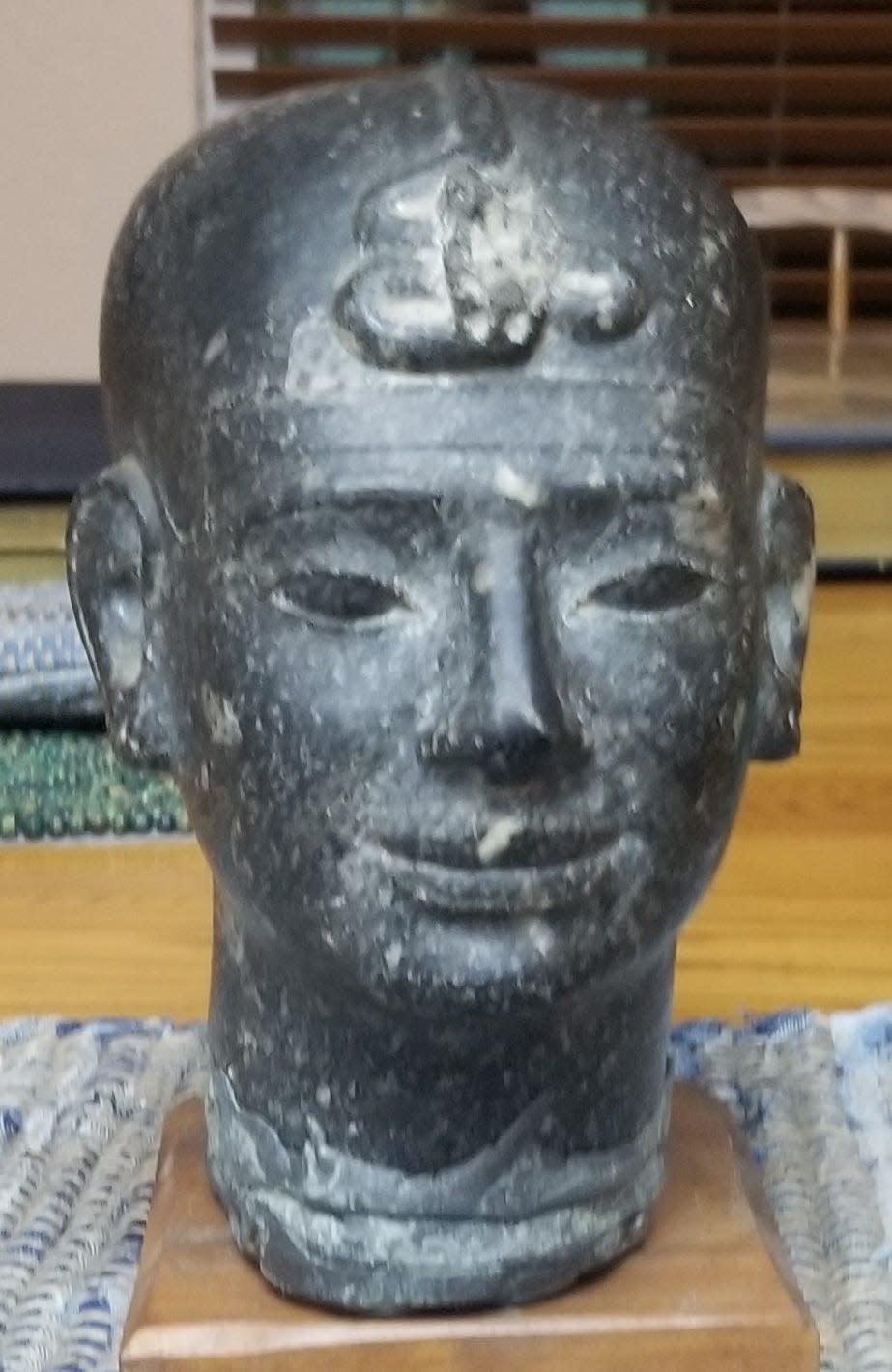John Sikorski: Sculpture may be ancient or could be a replica

- Oops!Something went wrong.Please try again later.
Q: I own property in Gainesville and hope to retire there one day, but I am presently working in Silicon Valley, California. A friend from Gainesville suggested that I write to you.
I am seeking an expert in Egyptian sculpture, 19th Dynasty, New Kingdom. Do you have anyone in your Rolodex who may be able to provide a first-order opinion on a sculpture I have? The piece was purchased at an upscale estate sale. I know the estate broker, having purchased many items from her over the years. She told me that the prior owner was a doctor who traveled quite a bit and received gifts in exchange for his services. The house in Atherton was sold for $12.5 million and they basically had a week to get everything out. There was a free baby grand piano for anyone who could move it in two days, for example. I still paid more than I normally would for such things and paid sales tax, etc.
I also have contacted the Egyptian embassy just to be absolutely certain that this piece was not looted eons ago, which is always a risk with this sort of stuff. The embassy is slow to respond and will likely take weeks or even months. In the meantime, I am anxious to know if this, see attached, is likely to be ancient or not.
What made me think that it was special at first was the quality. The pictures don't do it justice. It is amazing. Secondly, the cartouche for Seti I on the obverse is not a common one. There is a similar cartouche on a statue in the MET. I know it's a bit obscure because of an article explaining this.
Lastly, the base of the neck is covered with lead. This head seems to have come from a herm and a small chip out on the back of the skull, the size of a dime, may be a witness mark for whatever event separated this head from the rest of the sculpture. Pure speculation … we engineers like to do that. The lead was poured onto the neck apparently so it will sit flat as shown. Any advice or help is greatly appreciated. — R.O., Internet
A: It is not uncommon for quality reproduction and replicas of ancient and famous figures of past eras to be found in wealthy world travelers’ fabulous estates. I suspect you bought the bust on speculation that it could be worth more than the price you paid, which often ends in wishful thinking. With regard to authenticity, large national and international auction houses that have specialty departments dealing with antiquities will have experts who are able to tell the difference between genuine and later replicas, reproductions, fakes, etcetera.
I suggest you approach researching your bust from the position of selling it. The auction house will likely, after viewing your photographs, be able to render a superficial opinion of its authenticity. If it looks good to them, they will suggest a price it might sell for based on the need to physically examine it. The decision to sell is yours; this will at least give you an opinion on authenticity. I suggest you contact Heritage Auctions in Dallas and speak with the antiquities department. The phone number is 877-heritage. The website is ha.com. Good luck, and let us know what you find out.
— John Sikorski, with more than 35 years of experience, is an Ocala-based antiques advisor, consultant and broker. Send your questions to Sikorski's Attic, c/o The Ocala Star-Banner, 2121 SW 19th Ave. Road, Ocala, FL 34471-7752, or email absantique@aol.com.
This article originally appeared on The Gainesville Sun: John Sikorski: Sculpture may be ancient or could be a replica

